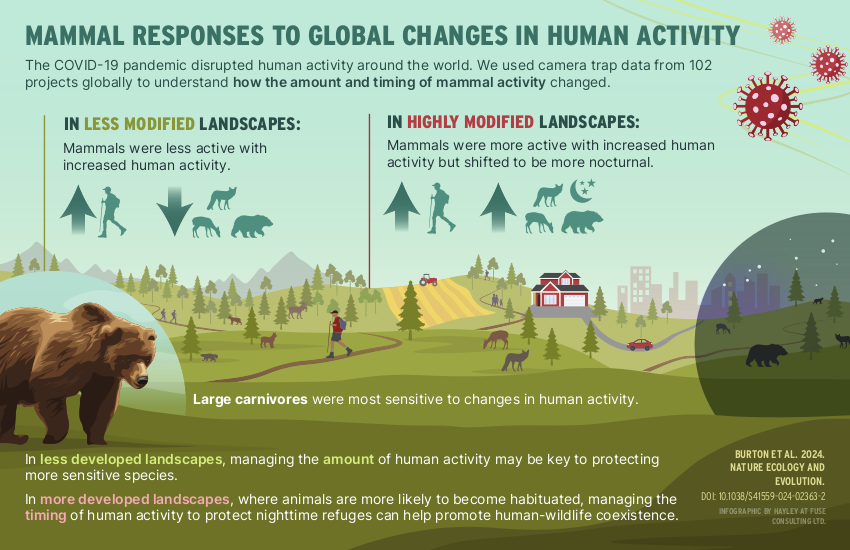The article entitled “Mammal responses to global changes in human activity vary by trophic group and landscape”, published in Nature Ecology and Evolution and which included the participation of CESAM/Dbio researchers, Rita Torres and João Carvalho, is one of the largest studies on the activity of wild animals, counting more than 163 species of mammals and close to 5000 camera traps around the world, and reveals that depending on the landscape they inhabit and their eating habits, animals react differently to human activity .
Herbivores tend to be more active when human activity increases, while carnivores show the opposite response. In less modified landscapes, such as rural spaces, mammals tend to be less active with increased human activity; while in highly modified landscapes, such as cities, mammals have become particularly active during the night.
These results highlight the importance of taking measures to minimize any harmful effects of human disturbance on wildlife, including reducing overlaps that could lead to conflict.
